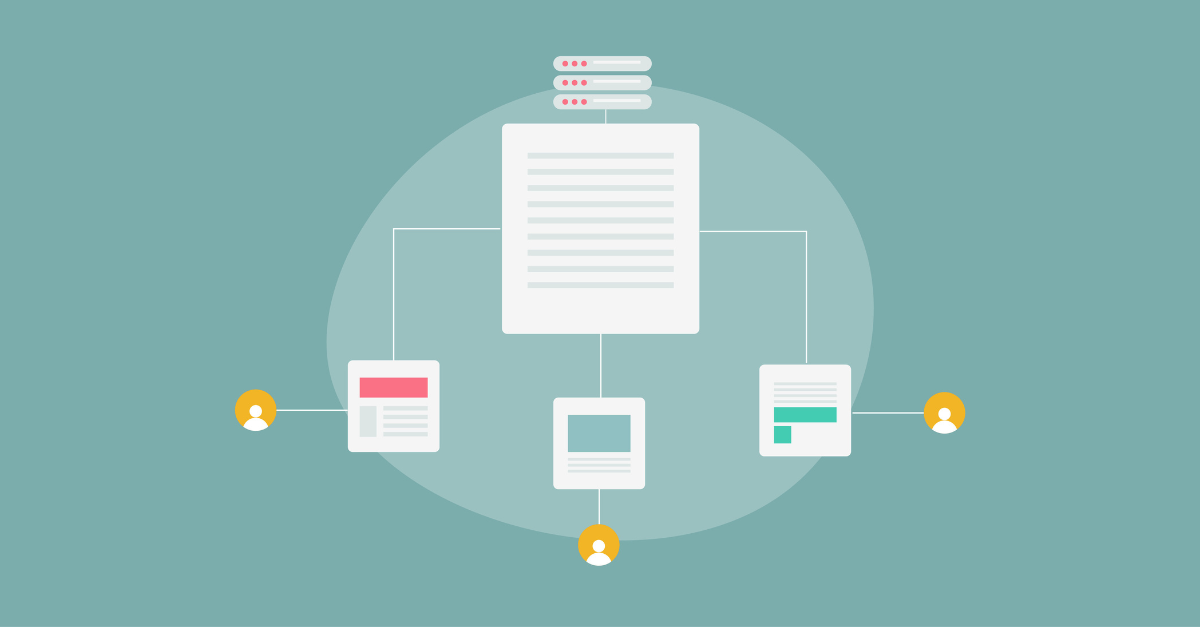Once upon a time, community banks and credit unions cornered the market on personalized communications and a neighbor-to-neighbor experience for their customers. But now, with the help of marketing automation platforms, big banks are poised to take back the customer experience. If community banks and credit unions hope to challenge those big banks, they’ll need a strong content strategy and an engine to deliver useful content to their customers. A great place to start is by building a user generated content guide for community banks or for your credit union.
How to Build a User Generated Content Guide for Community Banks and Credit Unions
Let’s start with the content strategy. This isn’t content marketing, remember. This is the ability to tie in measurable business goals, reporting, testing, and multi-channel distribution to the content you plan to write.
You’ll want to have in place a plan to produce content that informs existing and new customers on relevant offerings or news items—this is great blog content—but with a content strategy, you should be looking at content that expands beyond blog posting.
Increase customer stickiness and foster engagement with your new customers with a onboarding email series. Download your template and get started today.
Here’s where customer feedback comes into play. As a study from Cohn & Wolfe found, 63% of consumers would buy from a company they consider to be authentic over and above its competitors. And a great way to be authentic is to sample your customers’ feedback and reviews as a part of your content strategy.
Get started by gathering customer feedback in the following places:
Social Media—social media is a great place to share stories, and those can be yours and theirs. Share your stories about what makes your community bank or credit union special, and remember this isn’t a place for a sales pitch. If you have volunteer activities, or special customers you want to feature, or a unique person who works for you, share what you love about them.
You can ask your customers to share their stories, too, but be sure they know you plan to share those stories on social media. The best course of action is to ask them via email to share their story for a chance to be featured. This could be a great way to give extra promotion to a small business startup, for example, and you could even create an ongoing series dedicated to featuring similar customers.
Surveys—aren’t just for customer service anymore. Your marketing department needs to understand what your customers are saying. Based on survey results, you can create helpful, self-service website content, ongoing educational content for your blogs and emails, and get an understanding of who your customers are and what needs you are—and aren’t—fulfilling. Plus, surveys are a great place to ask for…
Reviews—new business can be positively or negatively impacted by the quality of your reviews, but did you know that Google is taking reviews into consideration for your search results as well? Positive reviews can improve your local SEO and can give you lots of content to use in your marketing campaigns (see 5 ways you can use reviews in marketing here). Train your customer service team to make direct asks for customers, add review widgets to your customer communication emails, and plug subtle reminders into your apps or online services. It helps to remind users why you’re asking, too—be sure they know how powerful a positive review is.
Emails and Automated Marketing Campaigns—just 30% of financial institutions utilized a marketing automation platform to execute personalized messages in the last 18 months. That’s too bad, because a marketing automation platform can help you achieve the customization and individualization customers want to receive from you without a ton of effort from your marketing team.
Using a marketing automation platform, you can grow your customer base and create new customer stickiness that lays the groundwork to generating customer feedback. Get started with a sample email onboarding series you can create and automate to all new customers—download yours here.
Before you get started, however, keep in mind a few tips and tricks to help your user generated content guide for community banks and credit unions stay on the right track:
- Give your customers time to enjoy your products and services before you ask them to review. In other words, understand your lifecycles—how long until someone would feel comfortable and fully onboarded, for example?
- Have a strategy for when to ask for reviews and when to offer help instead.
- Don’t be afraid to respond to bad review, and definitely don’t delete them!
- Add value with useful content before you ask your customers to give you value in return.
- Engage on social. Don’t just schedule and forget.
The key to creating a user generated content strategy is to remember that you’re building a community, not a customer base. Treat your customers like your neighbors, and they’ll respond in kind.
Want more content like this delivered directly to your inbox? Sign up for our digital marketing newsletters here.



